It’s shortly after 3 a.m. and I’m walking across D.C. in a black suit carrying two narrow duffle bags.
I am prepared to 1) get mugged, or 2) explain to a police officer that I’m not a hitman, but rather a tax lawyer headed to the Supreme Court.
The duffle bags contain branded folded chairs from my law firm. I am on my way to a hotel to meet an associate lawyer who flew in from one of our other offices.
I make it to the hotel without getting mugged or stopped by a cop.
The associate is outside of the hotel with a woman from a competing law firm in New York. Introductions are made and we then have the most ridiculous time getting a cab – the three taxis in front of the hotel are not interested in driving us only 2 miles to court. They would rather wait for a more lucrative fare to a far flung airport.
We eventually flag a taxi and make it the Supreme Court plaza.
It’s about 4 a.m. and there are already dozens of people camped out in line.
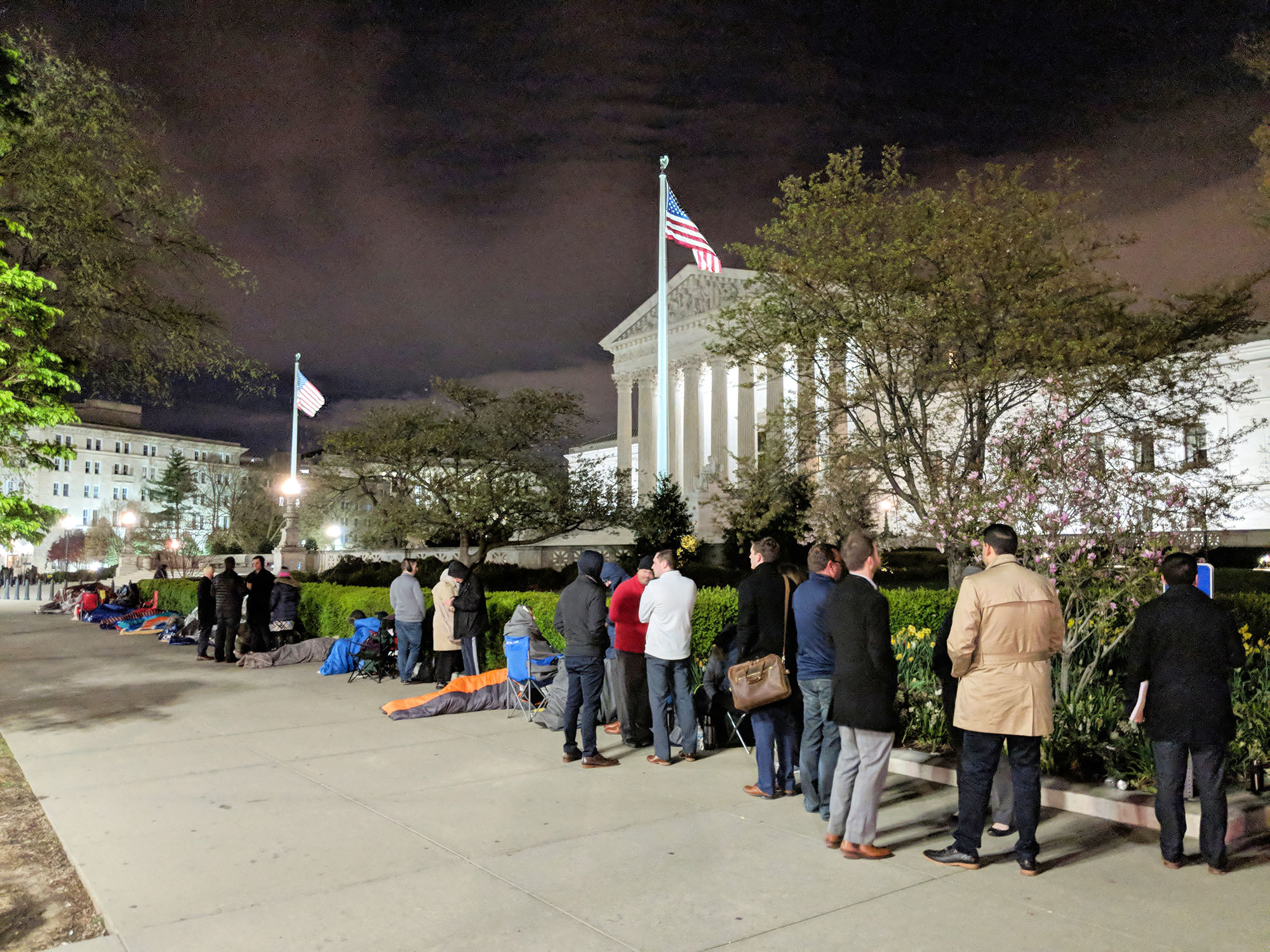
Professional line-standers in front of the Supreme Court.
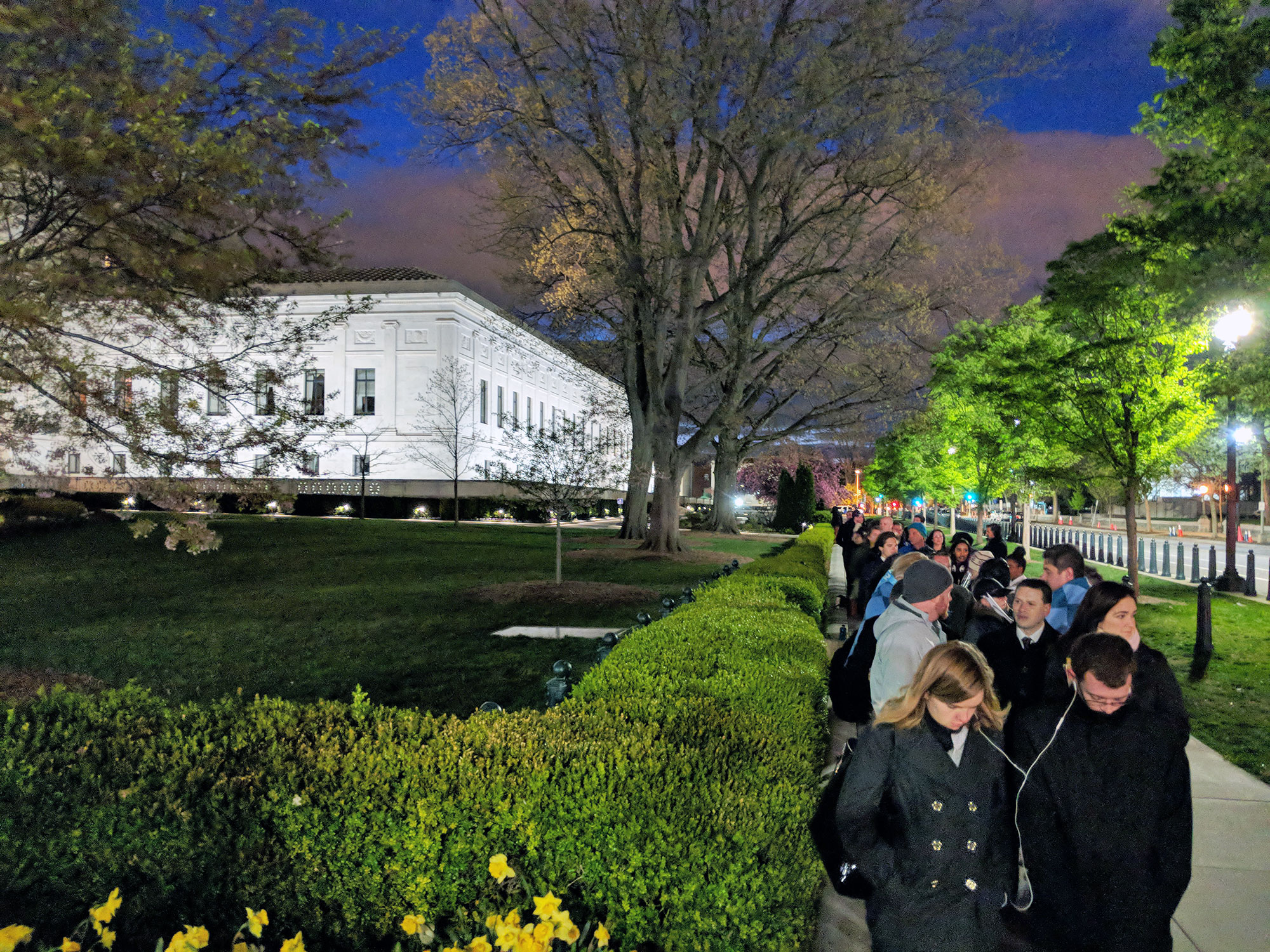
The lines in front of the Supreme Court before the Wayfair v. South Dakota oral arguments.
The case that attracted this odd mix of tax lawyers, tourists, and professional line-standers is South Dakota v. Wayfair. This is the first major state and local tax (SALT) case to reach the Supreme Court in about 25 years and my SALT professors have been buzzing about the case ever since my first week at Georgetown’s tax LL.M. program.
In August, I never imagined that I would actually be present at such an important Supreme Court oral argument. (The timing at the end of the semester is terrible.) And yet here I am, in the middle of the night among new coworkers.
We get in line and introduce ourselves to the crowd.
There are SALT attorneys – all of whom had Georgetown LL.M. degrees – a current classmate, Californian tourists with a child, and even an actress/director from NYC. (Her boyfriend was one of the SALT attorneys.)
It is cold, and everyone shivers as we get hit with wind gusts. We also wonder about the lack of bathrooms in the area but quickly agree to allow our neighbors to make the trek to the Capitol Hill Starbucks without losing their spots in line.

An early-morning news broadcast in front of the Supreme Court.
And then we settle in for hours of cold conversation. I post updates to my law firm’s social media accounts from the line, greet more classmates and coworkers as they arrive, but mostly spend my time getting to know those around me.
Time passes quickly and the line starts moving.
The professional line-standers who were camped out since 2 a.m. are replaced by lawyers. We then slowly realize that the line-standers were holding spots for multiple people, and we might not get seats in the court.
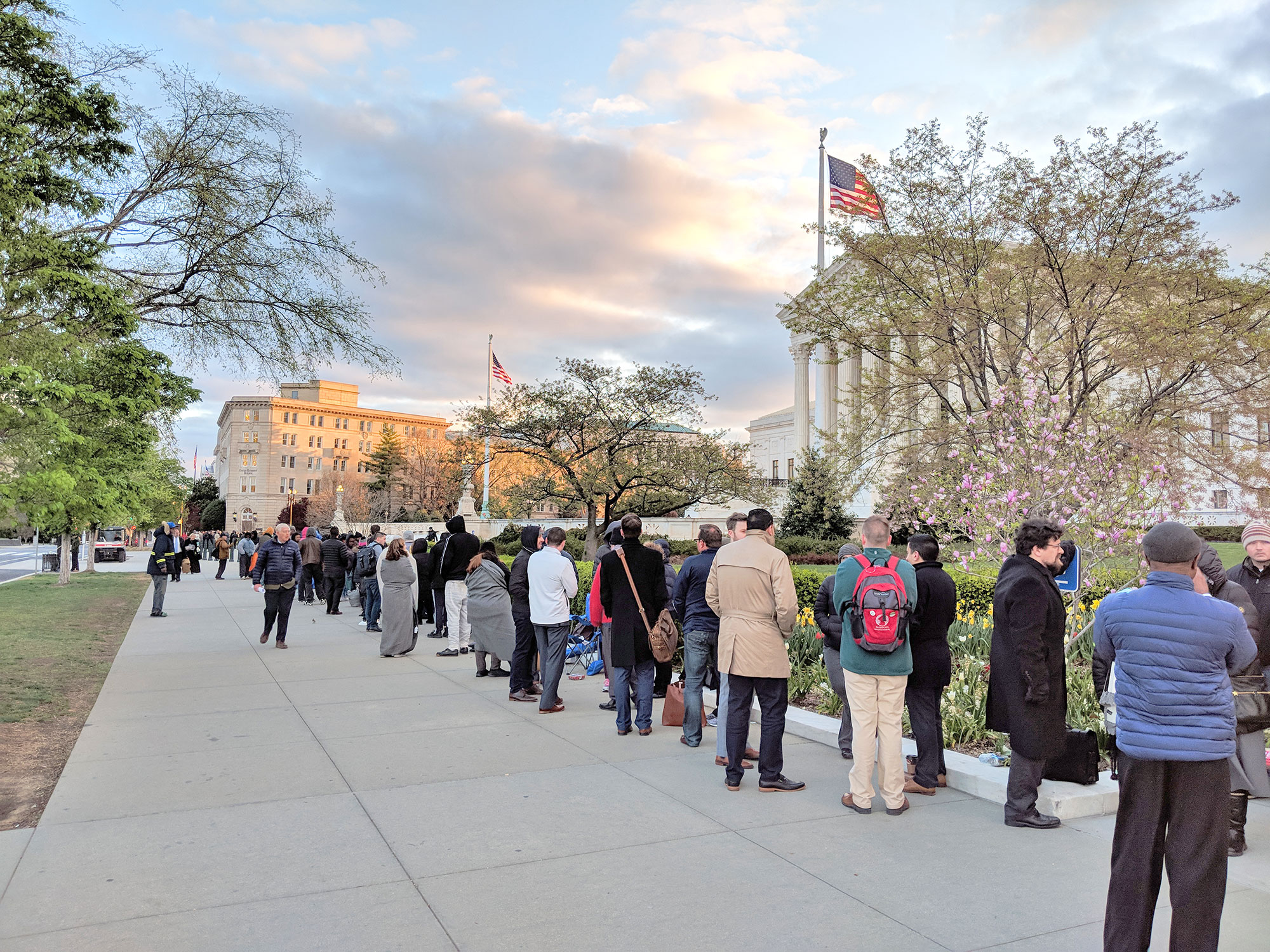
A line of lawyers and tourists in front of the Supreme Court.
Dawn comes, and the actress and I make a joint trip to the Capitol Hill Starbucks to get coffee for the group, use the bathroom, and warm-up. By the time the actress and I leave Starbucks, the streets are bright and it feels much warmer.
The last hour is tense.
The line moves from the sidewalk to the middle of the Supreme Court plaza.
We are now awkwardly on display to the snaking line behind us and the various reporters/camera crews. People are being let into the court – including the separate, shorter Supreme Court Bar line – but it looks like our group is right at the cutoff point.
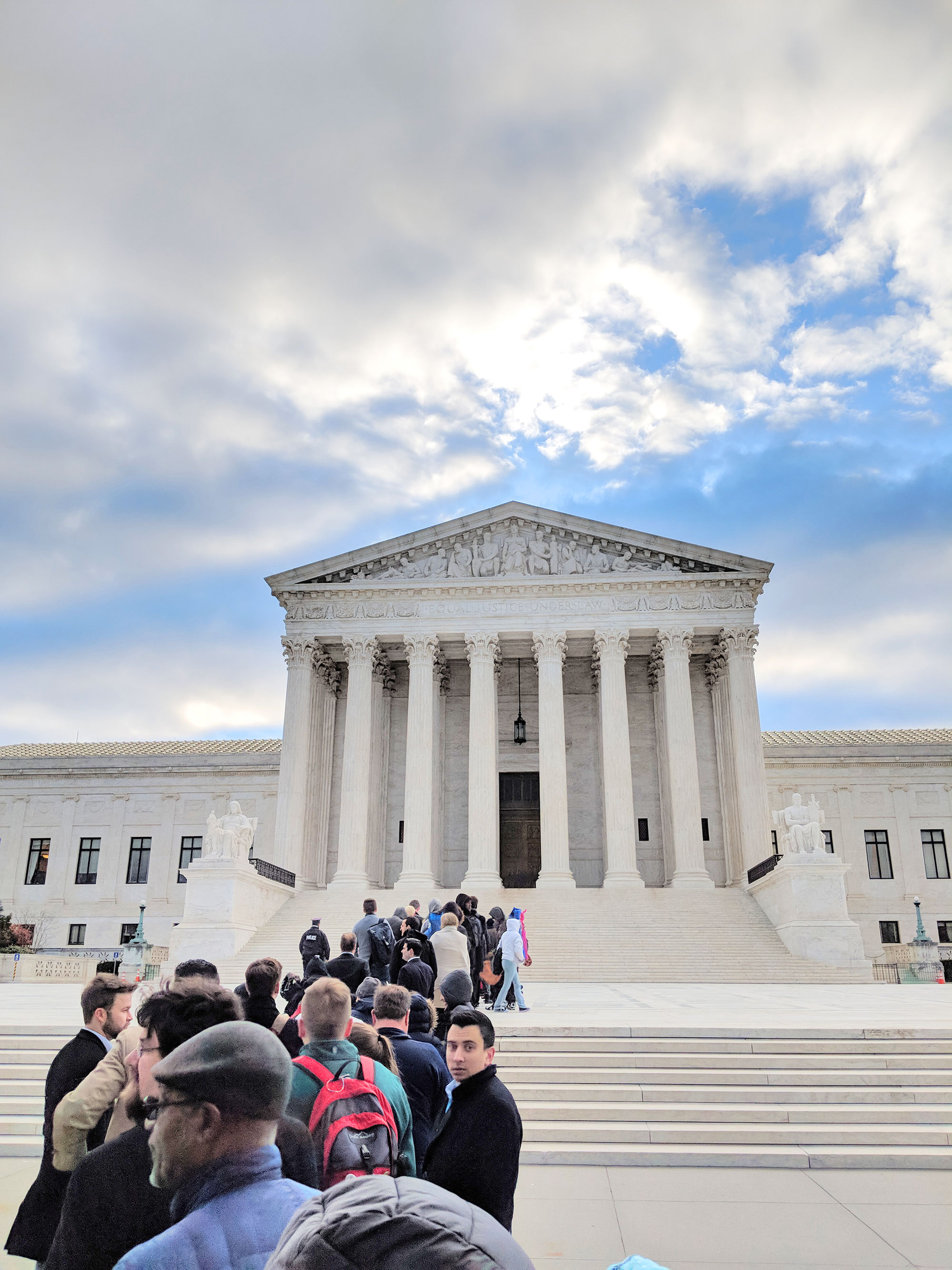
The line in front of the Supreme Court ahead of the Wayfair oral arguments.
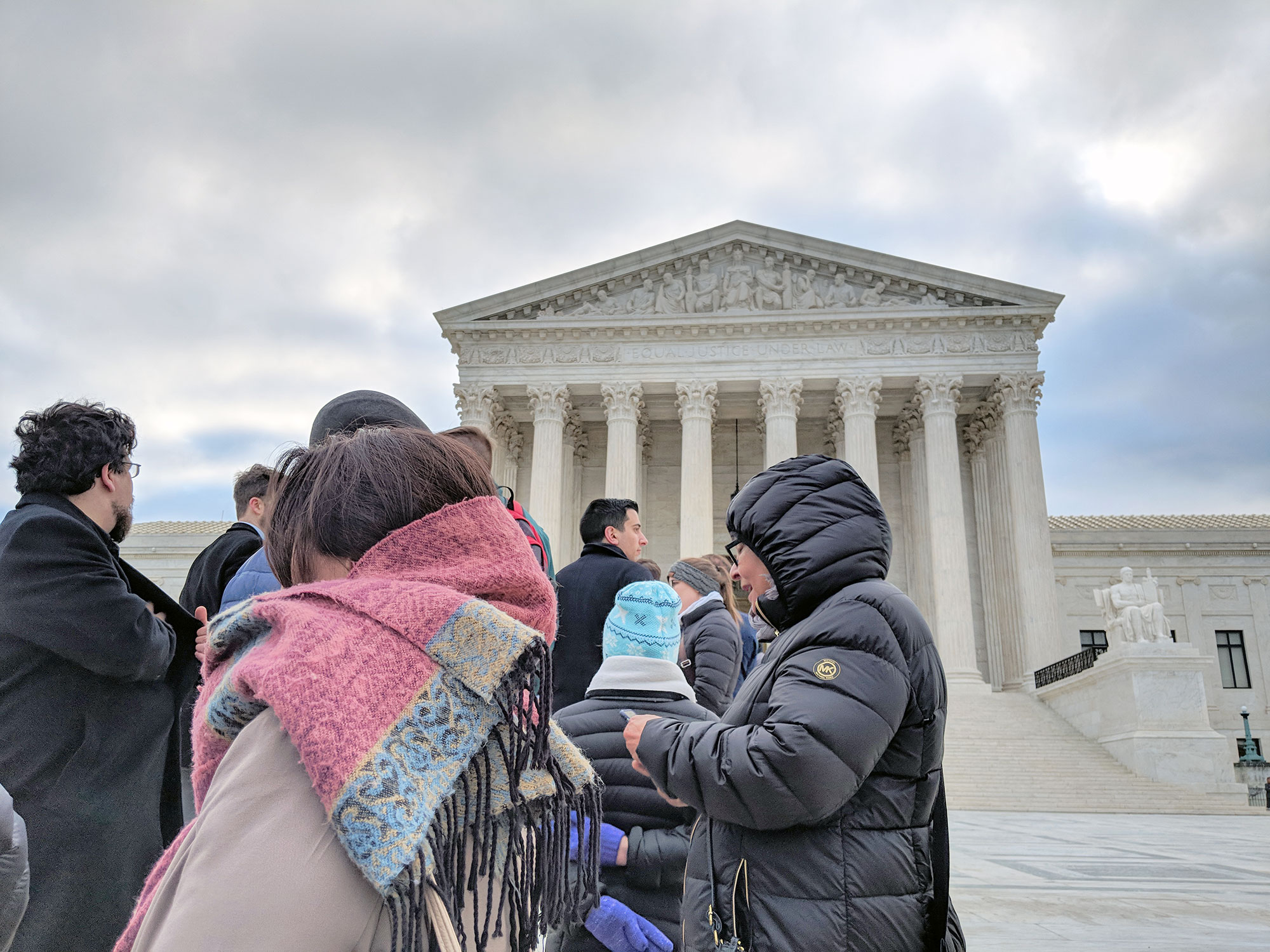
The lines in front of the Supreme Court right before the Wayfair v. South Dakota oral arguments.
One of my classmates is about 6 spots in front of me, immediately in front of the California couple with a 9-year-old girl. The Supreme Court security guard announces that he has three more tickets left. If my classmate takes his ticket, then the family with the 9-year-old girl will have to leave someone behind.
So of course my classmate gives up his spot for the 9-year-old tourist. He’s not going to be “that guy.” Everyone in line agrees that my classmate earned his karma points for the year.
We continue standing in the middle of the Supreme Court Plaza as the argument start-time approaches. A group of lawyers from New York awkwardly try to buy our spots in line. We politely tell them to buzz-off – after six hours of waiting in the cold, these spots are now priceless.

The lines in front of the Supreme Court right before the Wayfair v. South Dakota oral arguments.
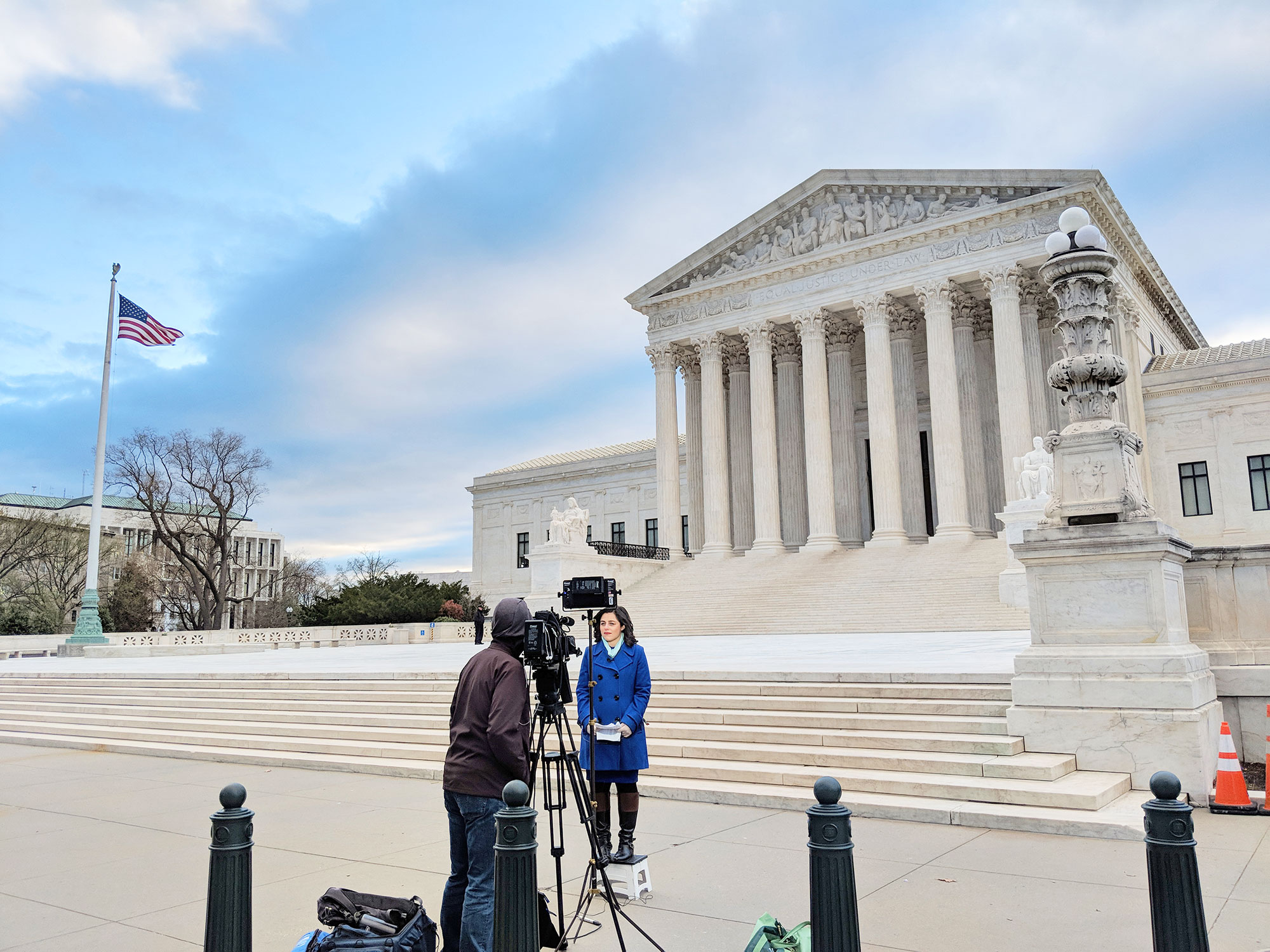
A reporter covering the South Dakota v Wayfair case in front of the Supreme Court.
I watch Georgetown professors and law firm partners whiz past us. (They are either members of the Supreme Court bar or purchased tickets from freelance line-standers.) The oral argument start time approaches and everyone in line slowly accepts the reality that this has been a grand waste of time.
The security guard then informs us that the court is full.
We can either wait for the next oral argument or choose the “three minute line” – where they allow small groups to watch oral arguments from the back of the court for 3 to 5 minute intervals before getting kicked out again. We had all been waiting for six hours at this point, so we took the 3 minute option.
After getting shuffled into the court and figuring out the court’s antiquated locker system, I find myself in a tiny seat next to the actress. I can see Justices Kagan, Alito, and Ginsburg before a column blocks my view. Seeing Ginsburg in person was particularly surreal after passing her portrait for the past year in school.
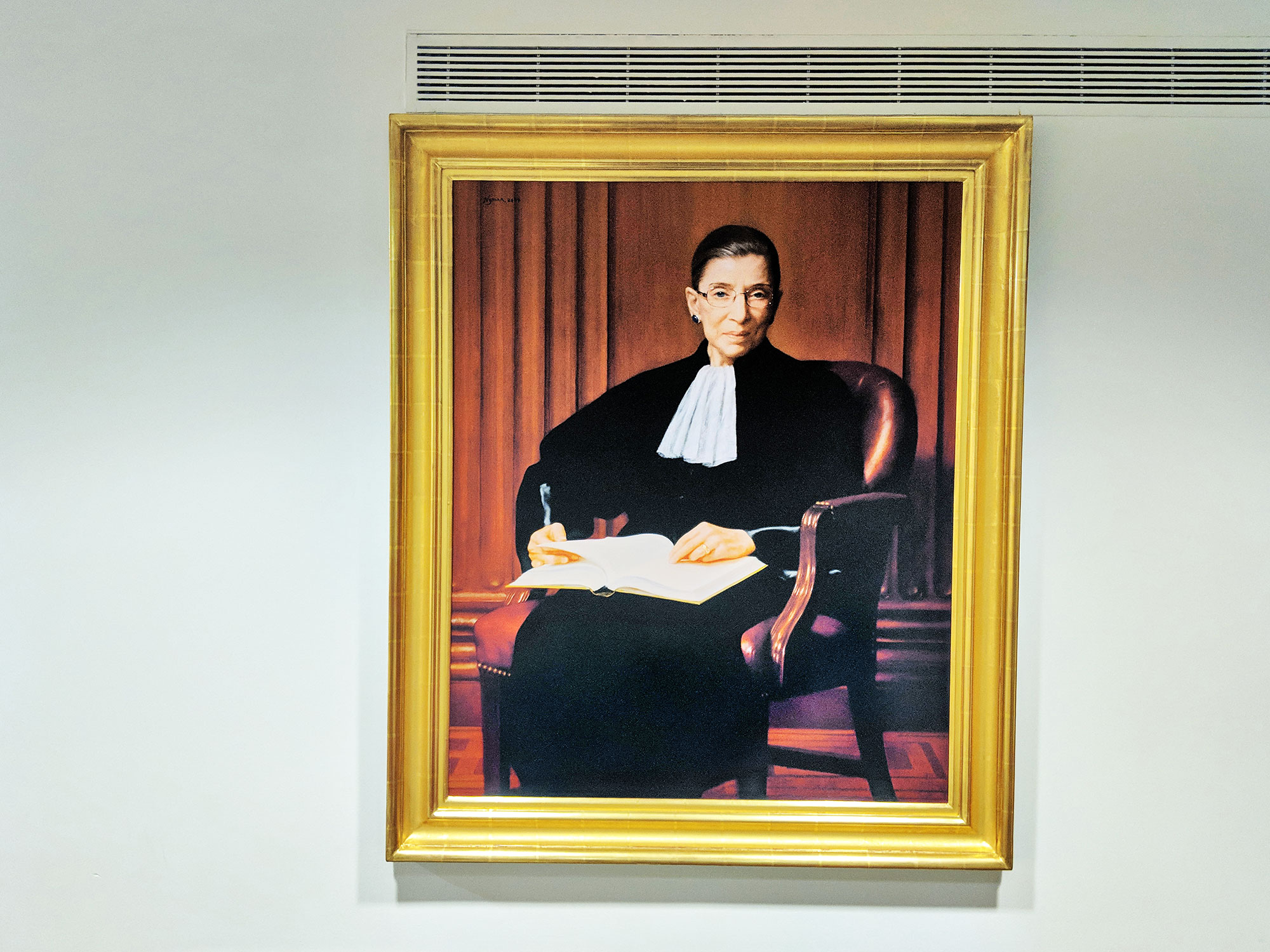
The Ruth Bader Ginsburg portrait at Georgetown Law.
Three minutes fly by and we are politely told by a 20-year-old usher to get the hell out of court. My classmate and I then walk to the Union Station Shake Shack for a well-deserved burger before I trek back to the office to update our Wayfair blog.
I may not have been able to sit through the entire oral argument, but my first Supreme Court experience was still worthwhile. It was also a nice reinforcement of the value of my LL.M. degree because most of the attorneys there had some Georgetown connection. I saw many current classmates, alumni, professors, guest-lecturers, and people I’ve been introduced to through the Georgetown network.
I’m sure Georgetown will still have an outsized presence at the court 25 years from now when the Supreme Court takes its next SALT case. By then I’ll hopefully either be a member of the Supreme Court Bar or at least have the foresight to pay a line-stander.

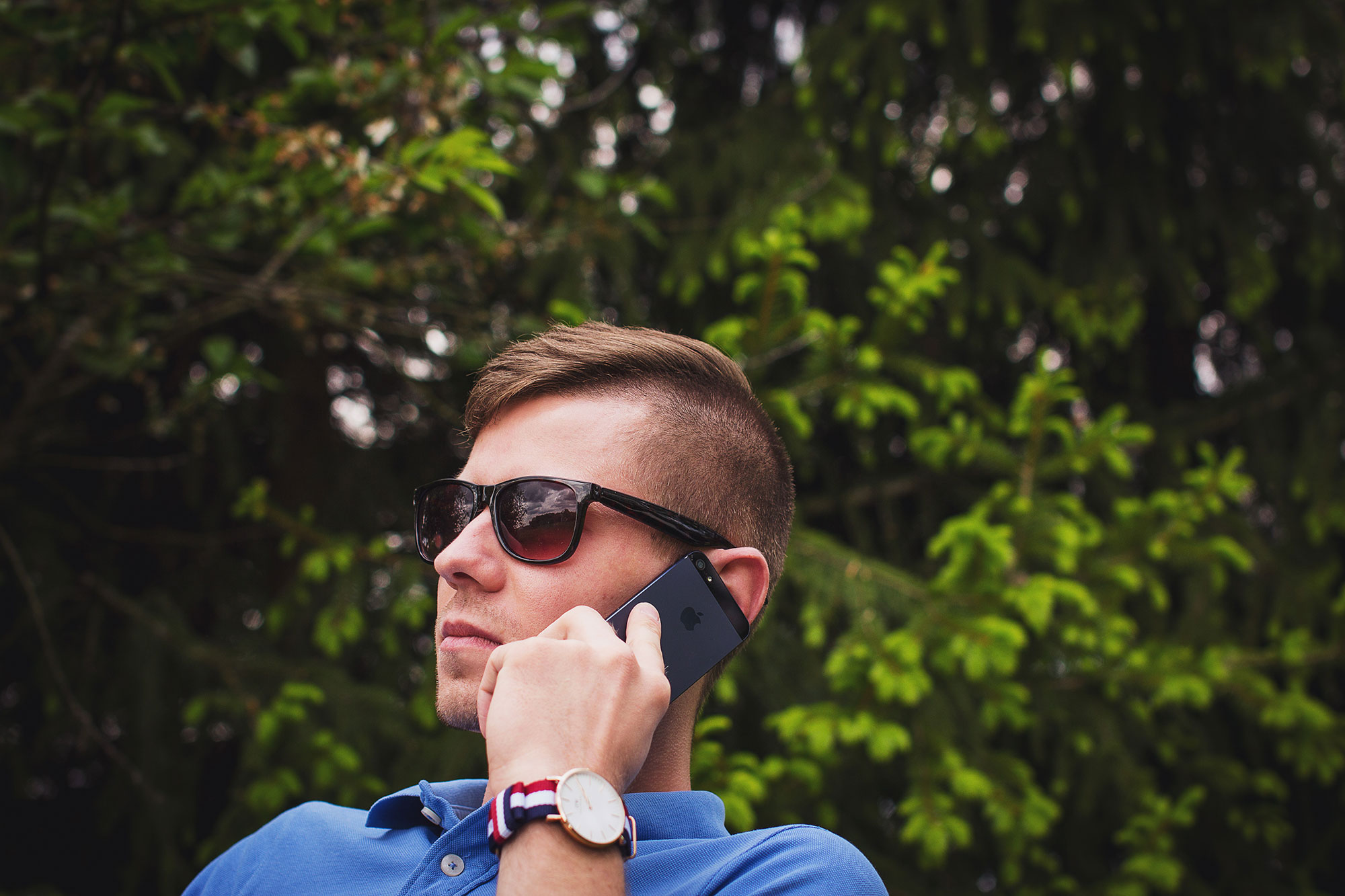

No Comments